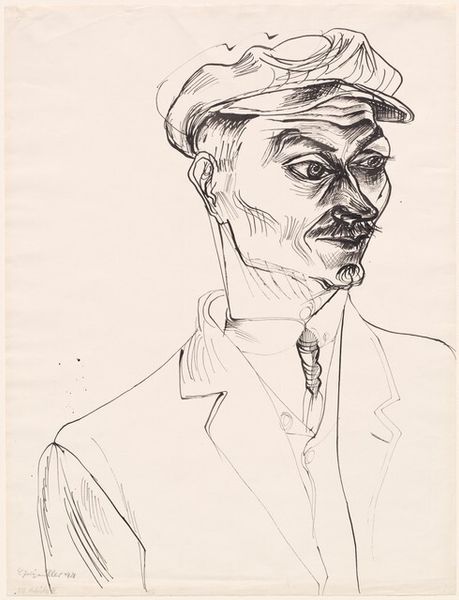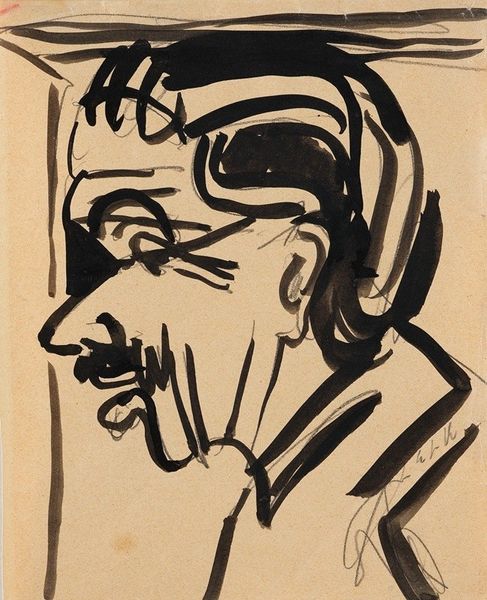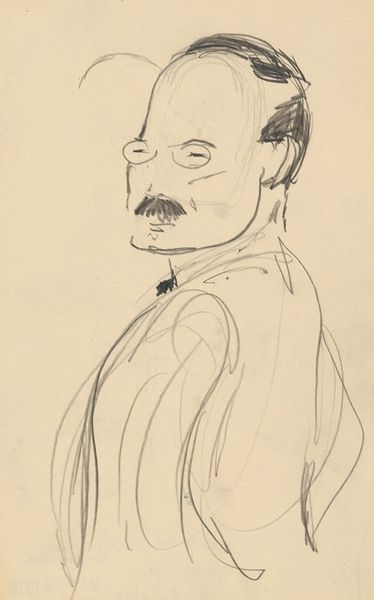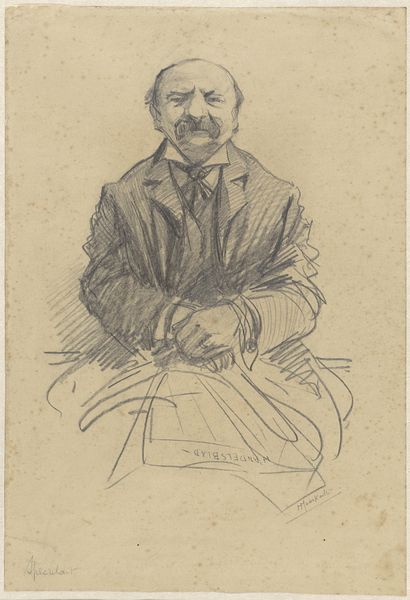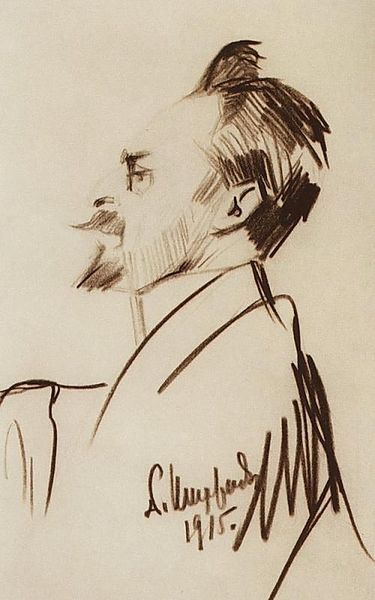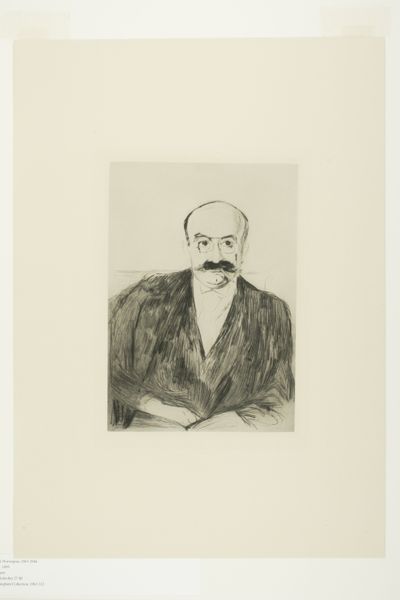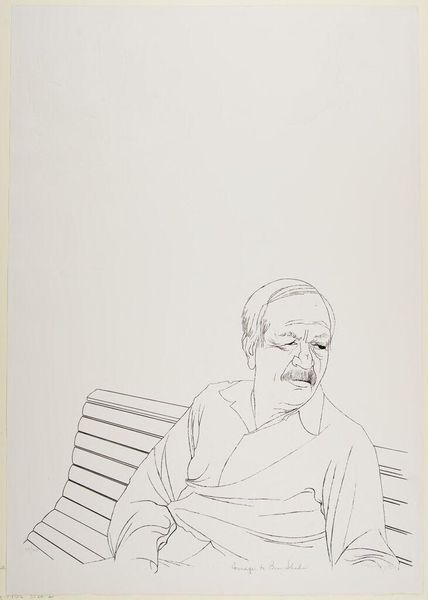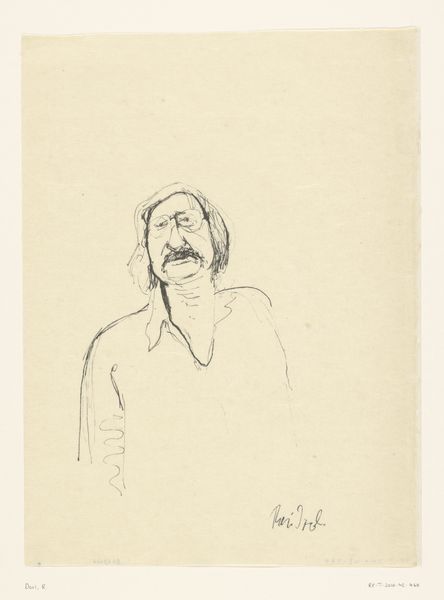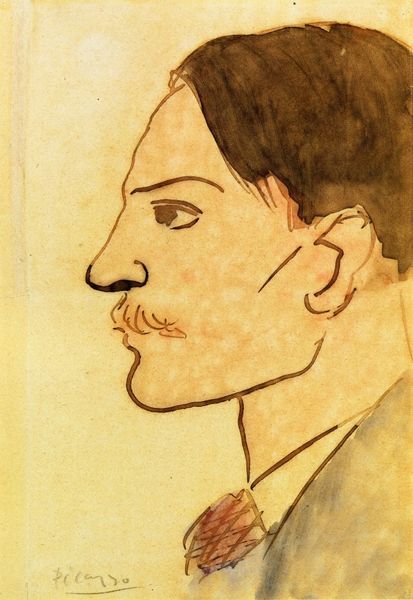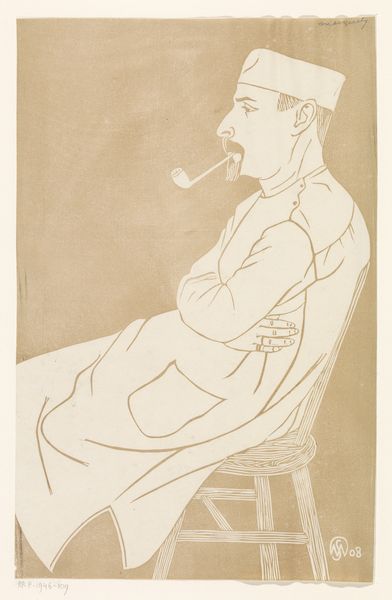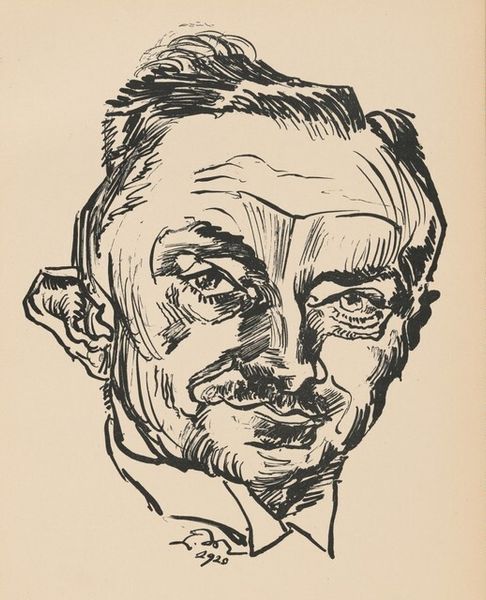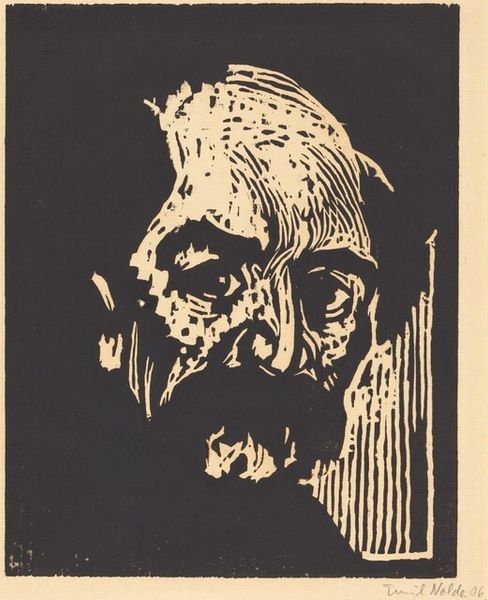
drawing, paper, pencil
#
portrait
#
drawing
#
caricature
#
caricature
#
figuration
#
paper
#
pencil
#
expressionism
#
line
Dimensions: 44.4 x 28.5 cm
Copyright: Public domain
Curator: Let's turn our attention to this arresting portrait by Egon Schiele, created in 1910. It’s a pencil drawing on paper titled "Portrait of Eduard Kosmack, Frontal, with Clasped Hands." Editor: My immediate reaction? Unease. There’s something deeply unsettling about those eyes and the rigid pose. It feels almost like a caricature, but one tinged with anxiety. Curator: You're right, the distortion is intentional. Schiele's Expressionist style often aimed to reveal the inner turmoil of his subjects. This was a period of immense social and political tension in Vienna; artists felt a responsibility to capture this zeitgeist. It is also one where Austrian art broke away from some academic tradition in mark-making and use of materials. Editor: And you can see that in the raw quality of the materials, right? He's working with basic pencil on what appears to be cheap paper. No pretensions, all about immediacy. It reflects a certain stripping away, revealing a truth not necessarily intended. There is very little tonal variation at play within this drawing; we can see, the hand is doing exactly what the artist wishes it to. Curator: Exactly! Also, this portrayal pushes the boundaries of traditional portraiture and certainly the expectations of Eduard Kosmack himself. These images began to unsettle those that commissioned them, Schiele’s market started dwindling rapidly as the social reaction intensified against this type of mark making and interpretation. The caricature then seems very critical and self-aware of social circumstances. Editor: Interesting. Thinking about materials, I’m wondering if the choice of this sort of cheap ground made this kind of approach to line quality and representation far more accessible to more diverse sectors of society. Not just elites. Perhaps that explains some of the backlash. The Expressionist artists found an avenue that didn't require large outlays or facilities for it to resonate within culture. Curator: A keen point, his use of materials challenged accepted norms regarding “high” art. He also used cheap paper to create very personal works like his many self-portraits—a reflection of artistic rebellion, in my view, where art began representing personal experiences in place of grand public statements or celebrations. Editor: A vital correction, and certainly important context to keep in mind with such art. Ultimately, I find it powerfully captures the tensions of the time through the immediacy of materials and line work. Curator: And I find that looking through both of our distinct lenses, the social climate and materials, provides greater depths to how unsettling and profound this small yet powerful artwork actually is.
Comments
No comments
Be the first to comment and join the conversation on the ultimate creative platform.
